Park home gardens: glorious gardening in miniature
A visit to a show-piece garden — and then a garden centre — set us on the track of more advice on how to gather inspiration for creating park home gardens.
Words by Val Chapman. Photos by Val and John Chapman
If you’re looking for ideas to inspire you to create amazing garden designs in small spaces around your park home, there is no better place to look than Britain’s many traditional tourist-attraction gardens.
Although their scale is far beyond anything that a park or holiday home garden can accommodate, if you look at individual areas and separate entities within a grand garden, you can gather ideas by the score — as we did when we visited Holehird Gardens in Cumbria.
This amazing place is spread over 10 acres overlooking Lake Windermere. In the last issue we took you through about half of this glorious, vast garden; now, we take you on a photographic walk through more of this fantastic conglomerate of inspirational features.
“If you look at individual areas and separate entities in a grand garden you can gather ideas for miniature gardens by the score”
Holehird is not just a great example of a source of ideas. It’s a great example of why visits to gardens make enjoyable days out, as we discovered.
As we stand by a natural pool, we notice dozens of tiny bright blue delicate damselflies landing on leaves. It’s a spectacular sight, and we could have watched for hours. Alas, the darting gossamer wings moved too quickly and eluded the camera — but there’s plenty of plant material to share with you here.
This area of Holehird is planted with species that thrive in damp conditions, including one that’s best left to gardens measured in acres rather than metres — the enormous, fast-growing leaves of gunnera plants, from South America; sometimes leaves span six feet!
Inspiration for a water feature
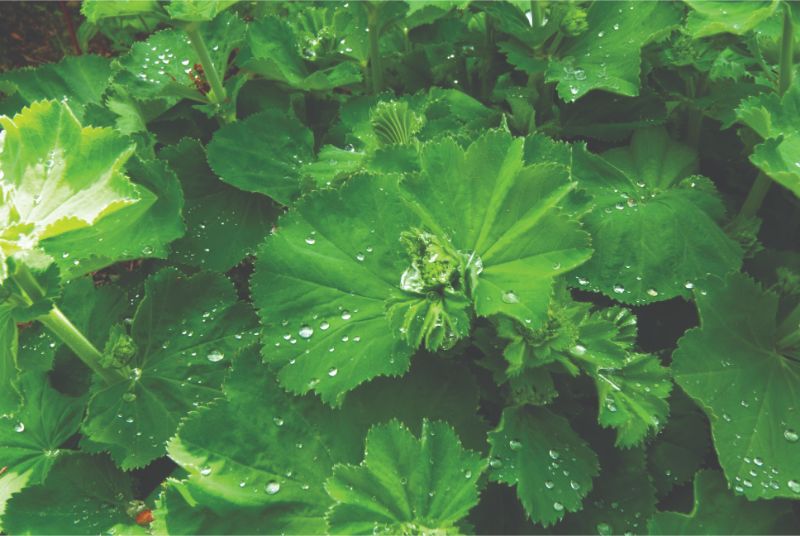 Hostas and ferns — now that’s more manageable than gunnera beside a park home — nestle beside water cascading into a pool which eventually disappears underground at Holehird…
Hostas and ferns — now that’s more manageable than gunnera beside a park home — nestle beside water cascading into a pool which eventually disappears underground at Holehird…
The scene is enchanting.
And you could easily create a pumped water feature to mimic a stream. Primulas and alchemilla mollis with droplets of water on leaves are pretty — and the background of Holehird’s own tarn and Lake Windermere in the distance, is breathtaking.
If you come to Cumbria, at leisure, or if you live anywhere close, Holehird makes a fantastic day out.
Bluebells and ferns
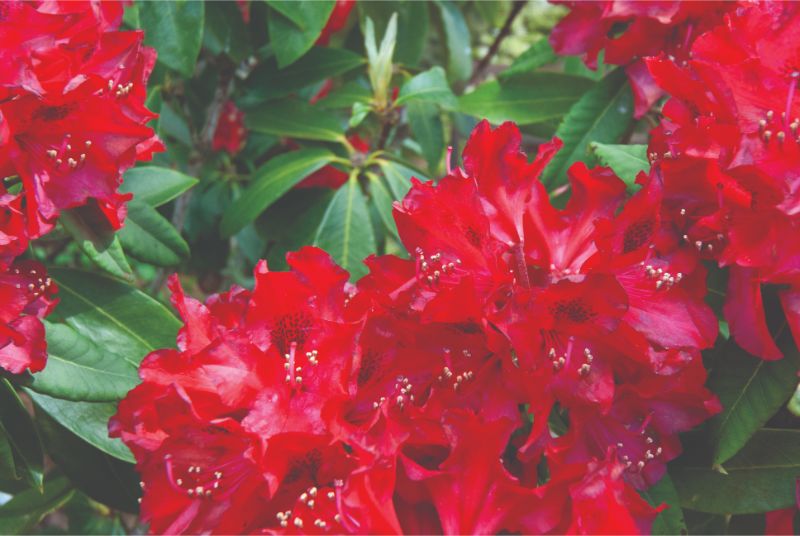 We take the Woodland Walk now, and reach a shady area where lily of the valley grows in profusion. It looks natural but Maggie Mees, the Publicity Officer for Holehird, who is our guide, tells us it has taken much work to create this area.
We take the Woodland Walk now, and reach a shady area where lily of the valley grows in profusion. It looks natural but Maggie Mees, the Publicity Officer for Holehird, who is our guide, tells us it has taken much work to create this area.
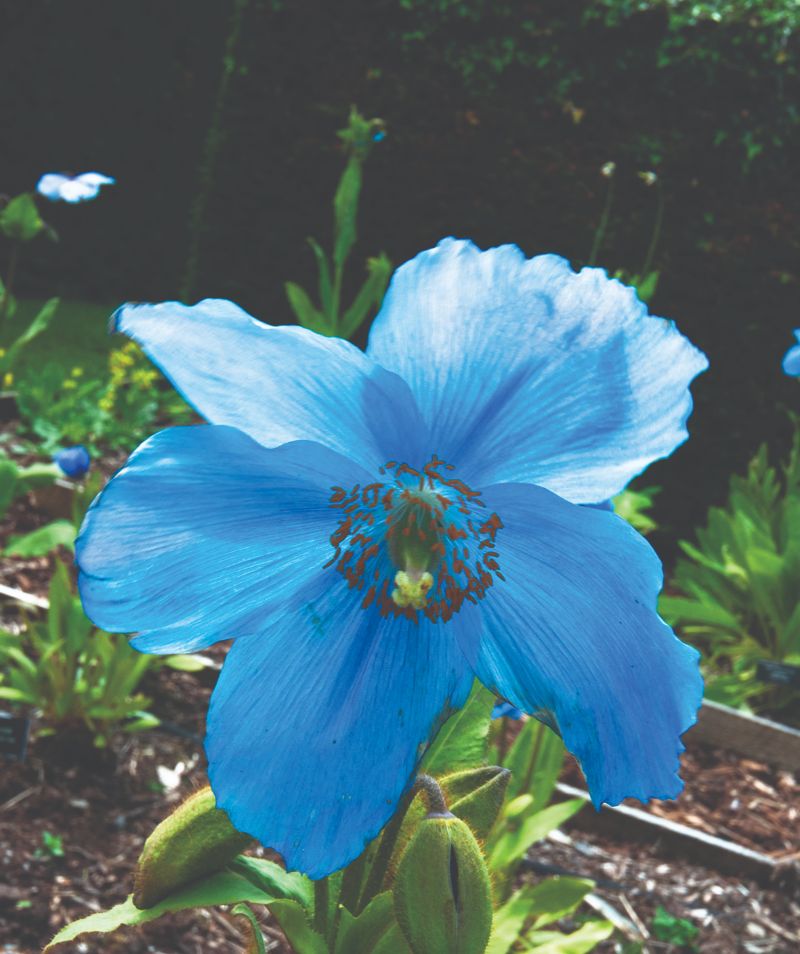
Ferns and bluebells were in abundance at the time of our visit. It’s easy to take the bluebells-and-fern idea and create a woodland corner in a shady area of your garden, I decide as Maggie tells me: “In June and July, this area is a show of blue and white flowers.”
And an area of your garden could look the same.
We find Himalayan poppies (pictured right) and I learn a tip to pass on if you decide to grow these lovely, tall plants. They need plenty of manure — so maybe avoid them if you don’t want the mess of using manure in a small garden! Garden centres sell lots of more convenient alternatives!
Shade and sun
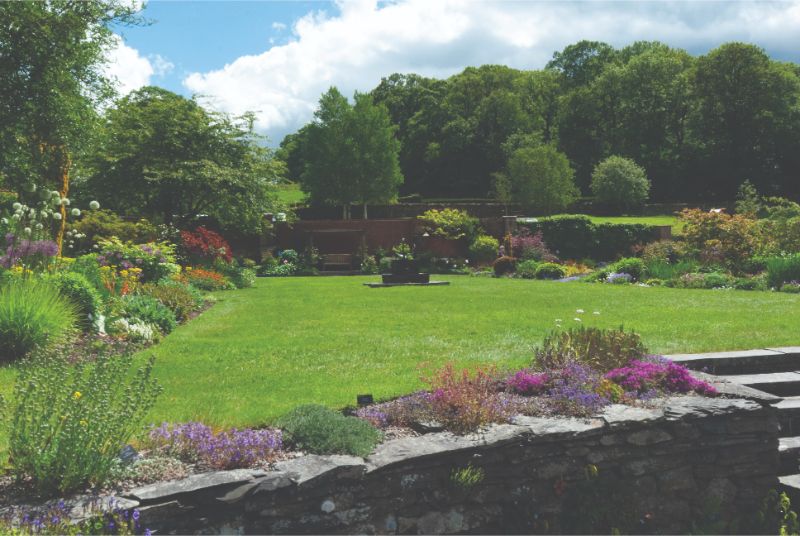 The Walled Garden is renowned as Holehird’s show-piece area. Sheltered by four high walls, it provides a lesson in what plants thrive best in north facing areas, which are fairly shady, and in the borders which enjoy full sun.
The Walled Garden is renowned as Holehird’s show-piece area. Sheltered by four high walls, it provides a lesson in what plants thrive best in north facing areas, which are fairly shady, and in the borders which enjoy full sun.
The west-facing border, for example, is planted with shrubs and climbing plants. The border that faces north is a shady area where roses and clematis thrive.
The south-facing border is where flowering plants thrive best. Again, there are lots of lessons as to where in your garden to plant certain species for best results.
A colour plan
Island beds here are planted to a colour plan going from warm colours to cool colours — that’s another lesson you can translate into any area of your garden.
Herbs
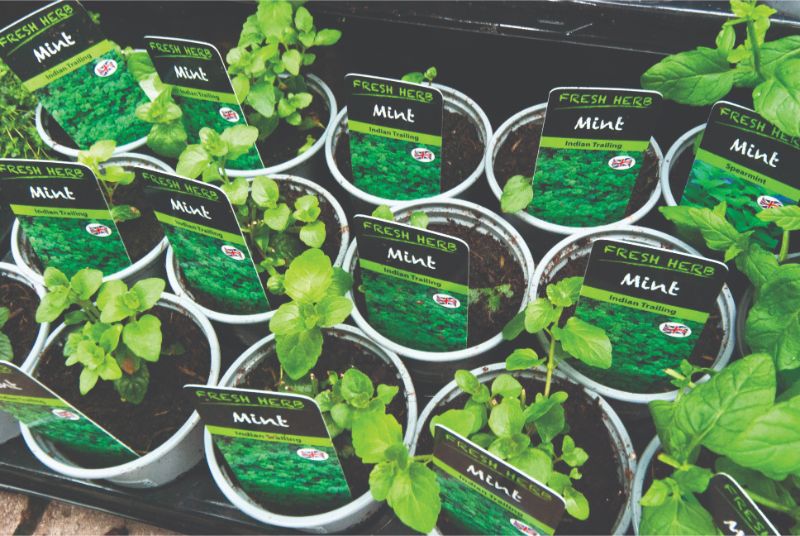
Pelargoniums and fuchsias are here in profusion, too. And there’s a lovely herb garden. All the plants are in pots, sunken into the ground. Slate dividers are used to limit the spread of some plants, especially mint.
This sort of display would be so easy to create in a small area of a park home garden.
Nearby, alpines are planted in troughs. Ferns are growing out of a wall. Hostas are here, too.
I spot a hosta called ‘Blue Mouse Ears’ — it’s not just the name that’s cute. The plant is pretty, and well suited to small areas. Another is called ‘Twist of Lime’; it’s bright green, as its name suggests.
These are two more plants of which I’d never heard until my day at Holehird — and two more to put on the list headed ‘ideal for miniature gardens’.
Gardening, I’m well aware, is a subject on which you need to have deep knowledge to get it right. A visit to a place like Holehird Garden proved to be a first-rate start point in acquiring that knowledge.
Next stop — a garden centre
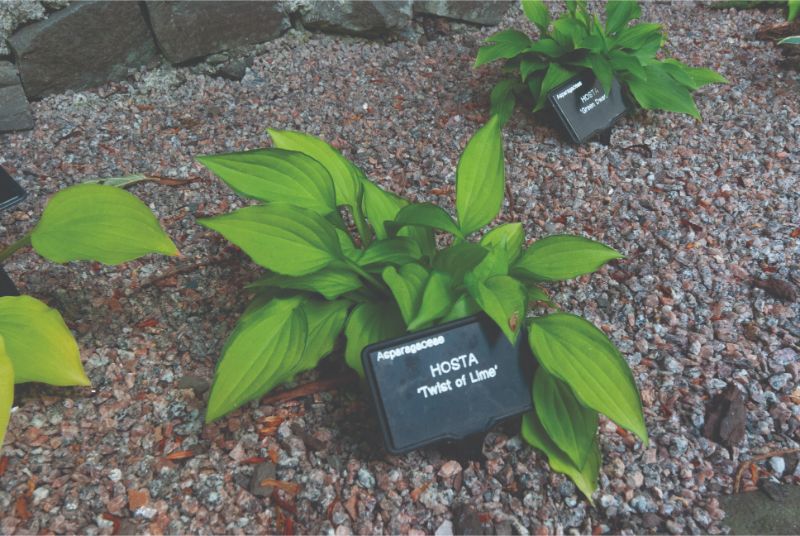 And the next stage in the process? Once you’ve gleaned inspiration from visits to show-piece
And the next stage in the process? Once you’ve gleaned inspiration from visits to show-piece
gardens, a visit to a large garden centre is the next step in creating your own little garden show-piece.
Brimming with ideas, I found the closest major garden centre to Holehird, Hayes Garden World. This is indeed a world — of everything from hammocks and seat swings to all manner of outdoor furniture — and many plants.
There are around 2,300 garden centres in the UK, according to the Horticultural Trades Association figures. So it stands to reason that, wherever you live, there’s one not too far away.
Hayes Garden World is a vast place — we could have easily got lost as we perused plants outside and all manner of garden furniture and accoutrements inside.
An abundance of all things gardening — and the ways in which plants are displayed — gives you ideas to bring to your park or holiday home garden.
Water features, vertical planting, fertilising, furnishing, garnishing with ornaments of all sorts — it’s all here and more besides.
Vertical planting
This year’s Chelsea Flower Show has pushed vertical planting into popularity — and that idea is easy to replicate in a park home garden setting because vertical planting takes up little room. Clematis and honeysuckle are obvious examples that you can train up a fence or trellis.
Water features
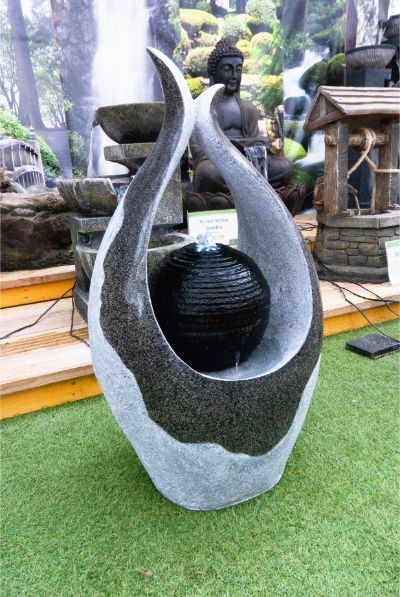
We discover a host of water features at the garden centre and are reminded of the enchanting stream at Holehird. We found a gorgeous sphere water feature for £234.99 — just plug in and fill with water and you have instant living water in your garden.
We’d go for that!
Water features are a lovely asset to a garden; just think of the relaxing sound of water running over stones, brimming over pots, along little channels.
A perfect recipe for relaxation! And a great focal point. Many garden centres have a good selection of water features, from the simple to the extremely ornate. Small curtains of water, tubes, spheres, cascades down little rocks. Let your imagination run wild.
Installation? The best advice is don’t be tempted to run a cable across your garden from your park or holiday home, even if it’s under soil or between stones. Get an electrician to install an outdoor socket.
And then make sure the cable running from it is weather-protected and in a place that won’t be walked on or otherwise disturbed. And another golden rule is to remember to drain the water feature and bring the pump inside during times of potential frost.
Prolong the flowering
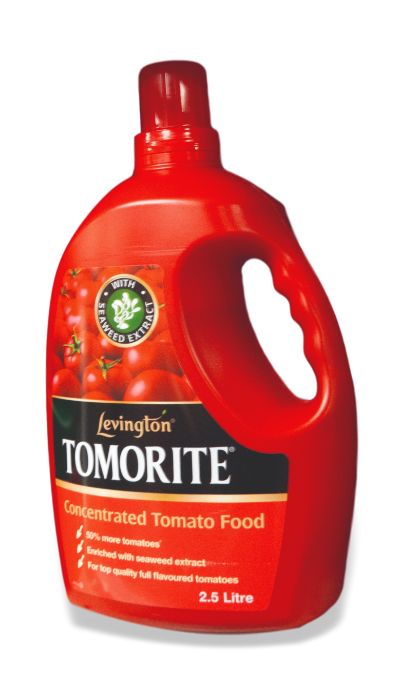 Perhaps more than anywhere, a garden centre leads you down the thinking path of seasonality — it’s summer at the time of this research for our series and bedding plants are in profusion. Then later we’ll be looking for winter pansies… Keep the colour coming and your garden will always look spectacular.
Perhaps more than anywhere, a garden centre leads you down the thinking path of seasonality — it’s summer at the time of this research for our series and bedding plants are in profusion. Then later we’ll be looking for winter pansies… Keep the colour coming and your garden will always look spectacular.
We learned a tip for prolonging summer bedding plants in bloom — if you feed them, they will continue to flower well into autumn. What’s the best food? Angela Slater, Hayes’ online garden advice writer, came up with the answer: Tomorite.
We’re novices, and we’re learning fast — this time the lesson is that, despite its name, Tomorite isn’t just for tomato plants; it’s recommended as being ideal for flowering plants.
Our garden experts and advisors for this series of articles, landscapers Mick and Kath Wilson, who’d joined us for the fact-finding mission, stepped into the conversation: a weekly feed of this product keeps bedding plants growing well into autumn, they advise.
And a golden rule: dead heading. As one who is guilty of leaving skeletal hydrangea heads on bushes until the next year, I took notice.
Another gem of advice: blood, fish and bone compound is also a good slow-release fertiliser. An addition of compost and chicken pellet fertiliser will bring down the pH of an alkaline soil.
Most fertilisers can be bought anywhere, including online from Hayes Garden World.
But there is one that we discovered which can only be bought in Cumbria: Wool Compost — and it’s made from bracken and sheep’s wool! You can’t get much more homespun than that! A good excuse to come here and get some.
Pots and planters
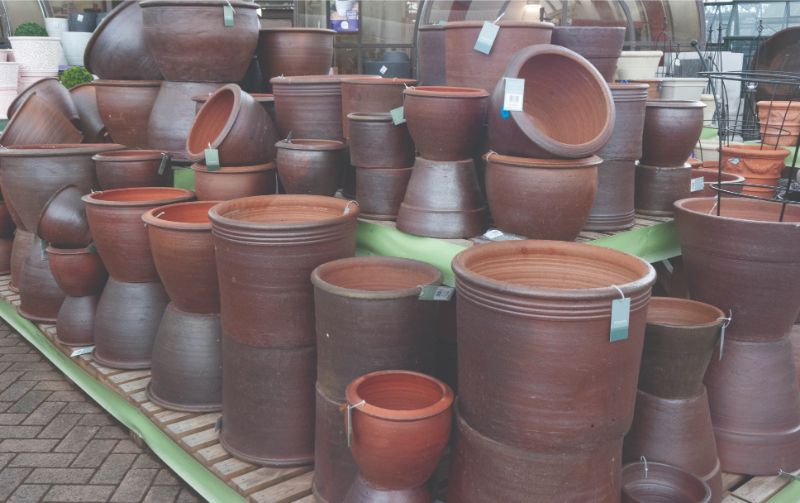
Another good excuse for a visit here is the array of pots and planters. This sort of miniature gardening is especially pertinent to park home gardens — even if you don’t want soil beds you can introduce colour, shape and interest by planting in pots.
We find a beautiful trough that looks like real stone but it isn’t — that would be £30 well spent, we decide.
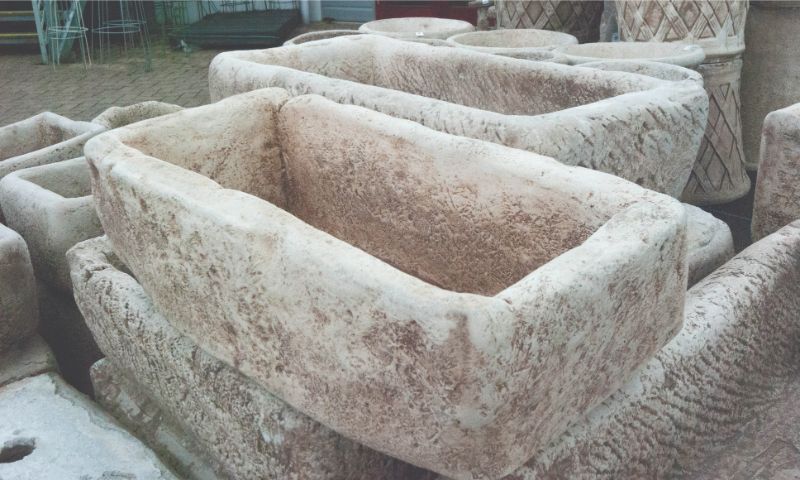 Wooden planters inspire ideas, too; some of those we found are in different shades of wood to add interest. You can buy natural stone planters, too — and, befitting the Lake District location, there are planters that mimic the Lakeland slate for which this region is famous.
Wooden planters inspire ideas, too; some of those we found are in different shades of wood to add interest. You can buy natural stone planters, too — and, befitting the Lake District location, there are planters that mimic the Lakeland slate for which this region is famous.
Barbecues, lighting and lounging
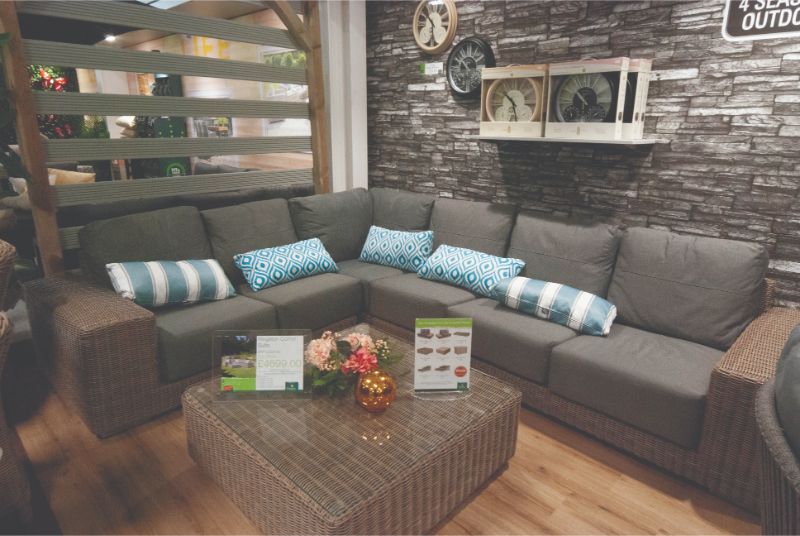 And then for the frivolous purchases... Or are they frivolous? You decide. It depends on what’s important to you.
And then for the frivolous purchases... Or are they frivolous? You decide. It depends on what’s important to you.
By this time during our day of discovery, we had become immersed in the whole subject of garden creation and our thoughts turned from how we’d plan and plant a park home garden to how we’d use the garden. That’s about barbecues and furniture.
Every size and type of barbecue is here. Lighting, lounging furniture, dining furniture… Glass flowers on stems... Let your thoughts run riot as you research and decide what suits you and your space.
Decking around both park and holiday homes lends itself superbly to beautiful garden furniture that’s designed to be left outside.
In a few short weeks, and with advice from inspirational experts Mick and Kath Wilson, I’ve turned from total garden novice to fast-learning enthusiast.
To date, I have a strawberry bed, a tomato plant and herbs (pictured below left) growing in a lovely zinc planter I found on Amazon. All, I admit, is as much inspired by eating as planting.
But it’s a start. And it proves how quickly anyone can turn from garden beginner to getting well on the way to becoming a fledgling landscaper.
More of the advice I’ve gathered is in the next issue of Park and Holiday Home Inspiration.
Next Time
Planting in troughs, plants to encourage bees and butterflies, use of sea-washed pebbles, rockeries and more.








Recent Updates
Park home surveys: all you need to know
For buyers of pre-owned park homes, a survey is vital to make sure the property you're buying is structurally sound and has been properly valued - ...
Selling a park home: all you need to know
Selling your park home is rarely an easy decision, so make the process easier with our guide to managing the ...
Park home energy: all you need to know
Make your park home more energy efficient with these tips, helping to save you money and be more ...
Park home refurbishment: all you need to know
Maintaining the condition of your park home, from its bathroom fittings to the condition of its chassis, is ...
Living in a park home: all you need to know
What's it really like to live in a park home? What are the pros and cons, the fees involved and the most ...
Forest retreats: all you need to know
Relax and immerse yourself in nature with a holiday home forest retreat, fusing the community and perks of a ...
Our guide to holiday homes by the sea
If you're interested in buying a holiday home, chances are you're going to look at a coastal holiday park – ...
Holiday homes for all budgets: our guide to mid-level holiday homes
If you are looking for a quality holiday home but don’t want to buy at the top end, the good news is that you ...
Holiday homes for all budgets: our guide to affordable holiday homes
Buying a holiday home on a budget may initially seem a daunting prospect – but there is a lot of choice out ...
Park and holiday home decking: everything you need to know
Decking is a fantastic addition to your holiday home, helping you to enjoy a more outdoorsy lifestyle ...
Other Articles
Park and holiday home finance: everything you need to know
Looking to buy a park or holiday home on finance? While holiday home mortgages are off the table, you can find great finance deals on park and ...
Park home part exchange: what you need to know
Our essential guide for anyone thinking of buying a residential park home using part exchange, including ...
Solar panels for park homes: our advice
If you're considering installing solar panels on your park home, you're far from alone – this growing trend ...
Buying a park home: 10 things to consider
Buying a home on a residential park is a huge and exciting step. Here is our comprehensive guide to making ...
Park home and holiday home chassis: everything you need to know
The chassis underpins the structural integrity of a park home or holiday home. This guide to the essentials ...
Holiday home and park home insurance: your complete guide
Specialist insurance is key to finding the cover most suitable for both park and holiday homes. Read our ...
Park home maintenance advice
Your park home chassis, roof and guttering need to be kept in top condition and older homes may benefit from ...
Park home construction: everything you need to know
A complete guide to park homes, including how and what they are made of ...
Park home paint: how to keep your park home in pristine condition
Our guide to painting your park home and keeping it looking its best ...
A top choice of holiday homes for sale
For your perfect home away from home, take a look at this great selection ...